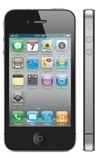According to the International Data Corporation (IDC) “Worldwide Quarterly Mobile Phone Tracker,” (http://www.idc.com) vendors will ship a total of 472 million smartphones in 2011. That compares to roughly 305 million units shipped in 2010. And Apple now ranks in third place.
That figure will nearly double to 982 million by the end of 2015, according to the research group. The smartphone market, which will grow more than four times the rate of the overall mobile phone market this year, is being fueled by falling average selling prices, increased phone functionality, and lower-cost data plans among other factors, which make the devices more accessible to a wider range of users, according to IDC.
“The smartphone floodgates are open wide,” says Kevin Restivo, senior research analyst with IDC’s Worldwide Quarterly Mobile Phone Tracker. “Mobile phone users around the world are turning in their ‘talk-and-text’ devices for smartphones as these devices allow users to perform daily tasks like shopping and banking from anywhere. The growth trend is particularly pronounced in emerging markets where adoption is still in its early days. So, the growth in regions such as Asia/Pacific and Latin America, will be dramatic over the coming years.”
IDC expects Android, which passed Symbian as the leading operating system worldwide in the fourth quarter of 2010, to grow to more than 40% of the market in the second half of 2011. A significant and growing list of vendors who have made Android the cornerstone of their respective smartphone strategies is propelling the growth of Android, says IDC.
The Symbian will steadily lose share throughout the forecast period as its biggest supporter Nokia transitions its smartphone strategy to Windows Phone. This will present a huge opportunity for competing operating systems to gain footing, according to IDC. Still, Nokia’s commitment to support Symbian devices until 2016 will keep the installed base of Symbian-powered smartphone users on par with its competitor.
Windows Phone 7/Windows Mobile will benefit from Nokia’s support, scope, and breadth within markets where Nokia has historically had a strong presence, according to IDC. Until Nokia begins introducing Windows Phone-powered smartphones in large volumes in 2012, Windows Phone 7/Windows Mobile will only capture a small share of the market as the release of Mango-powered smartphones aren’t expected to reach the market until late 2011. Nevertheless, assuming Nokia’s transition to Windows Phone goes smoothly, the OS is expected to defend a number two rank and more than 20% share in 2015.
iOS was the third ranked OS going into 2011 and will remain a force in the mobile phone market throughout the forecast, according to IDC. After an initial explosive growth period, iOS is expected to grow at a more modest pace throughout the latter half of the forecast as the smartphone market matures and diversifies. Although a small market share decline is expected, IDC expects significant overall shipment volume growth through the end of 2015.
BlackBerry OS is expected to maintain its position as a Top 4 smartphone operating system over the forecast period. Like iOS, the BlackBerry OS will experience market share decline even as shipment volumes grow throughout our forecast.



